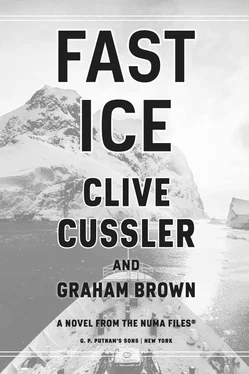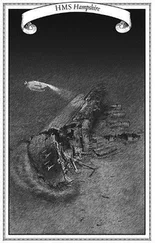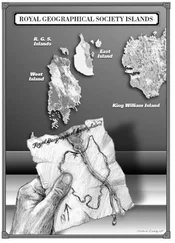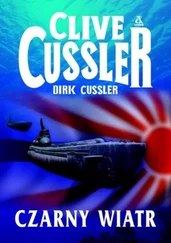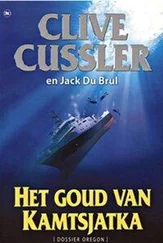Gamay knew that but there was little she could do about it. She had a more immediate concern. Paul’s voice was strained. He didn’t sound like himself. Gamay came over to check on him. The new gauze was bloody but not soaked. Still, he’d lost a fair amount of blood. “We need to get you to a hospital.”
“Good luck finding one,” Paul said. “Even if we could reach Rudi, there’s no way to get a helicopter through this storm.”
The sun had risen on a whiteout in the making. Wind-driven snow had cut visibility to a hundred feet or less. And it wasn’t just the snow coming down from the sky, it was being whipped up off the surface like dust and streaming in places like smoke. Already the changing direction of the wind was scouring away drifts that had formed overnight.
“We don’t have to get you back to the mainland,” Gamay said. “A ship or a manned scientific station where they have a medical officer would do just fine.”
“I already looked,” Paul said. “The nearest outpost is an Indian science station two hundred miles to the west of us with a mountain range in between. That’s too far to walk.”
She knew he was right, but she hated feeling powerless. “You know I’d rather be the one who got shot, right?”
“So I could worry?” Paul said. “No thank you. Relax, I’m going to be fine. Our real concern should be helping Kurt and Joe if we can.”
“They’re eighty miles away, Paul. It’s out of our hands now.”
“I’m not so sure about that,” he said. “I’ve been thinking. We should make another attempt to disable that pumping station. Kurt and Joe may not make it to the coast or they may get there and find a platoon of Ryland’s people guarding whatever they find there. We can’t count on them pulling this off, which means we have to try again, back here.”
“What can we do?” Gamay said. “Our explosives are all used up, the shaft to the pumping station is sealed off by a hundred tons of ice and we have nothing we can use to cut through that.”
“We need nothing,” he said. “Yvonne and her people left plenty of equipment lying around. There’s a drilling rig out there with a half mile of pipe stacked up beside it. There are cutting tools and welding torches in storage, where we found these mats. There are hammers, shovels and everything else they used to set up these modules.”
“That drilling rig looks like an ice sculpture,” she reminded him. “It’s frozen solid.”
He propped himself up on his elbows. “The pipe isn’t.”
“And what, exactly, are we going to do with it?”
“We could capture the heat and steam pouring from the exhaust ports and use it to tunnel through the ice the way Yvonne and her people did.”
Gamay raised a finger, primed to shut down any idea that would put her husband at risk, especially as it all seemed pointless. Yet before the words left her mouth, she realized the idea had merit. “You forget that pipe is big and heavy.”
“What about those pipes,” he said, nodding toward the ceiling.
Gamay looked up. Running along the ceiling were thick PVC pipes. She’d seen lengths of it stacked vertically in another room. Yvonne and her people had used it for water and warm air circulation. While the PVC would get brittle in the cold, the heat from the steam would keep it from cracking.
“If we funnel the steam from all four exhaust ports into one pipe and then angle that pipe downward,” he said, “that would give us a high-temperature knife that would slowly cut through the glacier, melting its way through to the pumping station down below.”
—
Ten thousand miles away, Rudi was staring at the large screen in the front of the room. It displayed two satellite photos side by side. One was crystal clear, the other blurred by fog or clouds.
Garland pointed at the images. “The first one is from a NASA glacier study done ten weeks ago. The second is our satellite pass made just before the storm came through. Hiram has normalized the photos so they’re of the exact same scale and angle.”
Yaeger nodded. “I’ve pulled out the cloud layer and had the computer scan for discrepancies. Here’s the result.”
He touched a button and the photos synced up as the clouds were stripped away.
“Zoom in on the end of the pipeline,” Rudi ordered.
“Stand by,” Yaeger said.
The frame tightened and compressed, zooming in closer and closer to the target zone.
The truth was easy to see. In the NASA photo, the terminal moraine of the glacier stretched across the screen, from one side to the other, with only the tiniest icebergs and growlers appearing in the dark water beyond. In the NUMA photo, an irregular diamond-shaped iceberg sat at the very end of the glacier.
The radar return had painted it as ice, which it was. Its absence in the earlier photograph gave it away.
“It doesn’t look much like a ship,” Rudi said. “If the point is to disguise it—”
“The computer thinks it’s an iceberg calved from the glacier,” Yaeger said. “If something that large broke off the glacier, it would leave a mark. There’s no mark.”
“That’s our ship,” Rudi said. He had no doubt. Its position matched up too closely with the far end of the pipeline for it to be anything else.
“If it is, it’s a huge one,” Garland said. “Eighteen hundred feet in length, three hundred feet wide amidships.”
Yaeger agreed. “Joe said ‘aircraft carrier size or larger.’ He was right on target. Now, what do we do about it?”
Rudi’s euphoria gave way to reality. He’d already spoken to the Secretary of the Navy and the Chief of Naval Operations. While they had ships, submarines and planes scouring the seas for Liang’s tankers, there were no combat units within six thousand miles of the Antarctic coast.
The nearest surface vessels were in the Indian Ocean. Any of those ships would take five days at flank speed to reach an intercept position. That would be five days too late.
“We send the information to Kurt and Joe,” he said. “And hope they can stop this thing from ever leaving port.”
60
Kurt and Joe crouched down and gazed over the edge of the glacier. Ahead of them lay what appeared to be a large iceberg. It was covered with ridges and swales and jagged peaks, just like every iceberg Kurt had ever seen. It appeared to be crumbling on top and eroding on the near side where the sea lapped against it. With the snow still falling, the visibility was such that he couldn’t even see the far end of the vessel.
“So, that’s a ship?” Kurt asked, studying the contours through a pair of binoculars.
“According to Rudi,” Joe said. “Do you think they’ve started filling their tanks?”
Kurt glanced at his watch and nodded. Despite the snow racer running downwind, the trip had taken three hours. Terrain, and caution, had slowed them. The flow of water had almost certainly beat them to the finish line, but it couldn’t have been by much. “How long does a supertanker need to top off?”
“Eight to ten hours,” Joe said. “With crude oil, you have to go slow. You have to stop and vent the tanks from time to time to avoid buildup of explosive gases. You have viscosity issues, too. Even light crude is relatively thick. Ryland is filling this thing with lake water and he’s using a larger pump, at higher pressure. Even if this vessel is as big as Rudi says it is, back-of-envelope calculations say four or five hours to fill it.”
Kurt would put Joe’s back-of-envelope calculations up against a computer from MIT any day. “That means he’s at least a third of the way home.”
“What do you want to do?”
“Stop the pumps like we planned,” Kurt said. “And keep this ship from leaving port. If it’s stranded in the bay, it can’t spread the algae beyond it.”
Читать дальше
